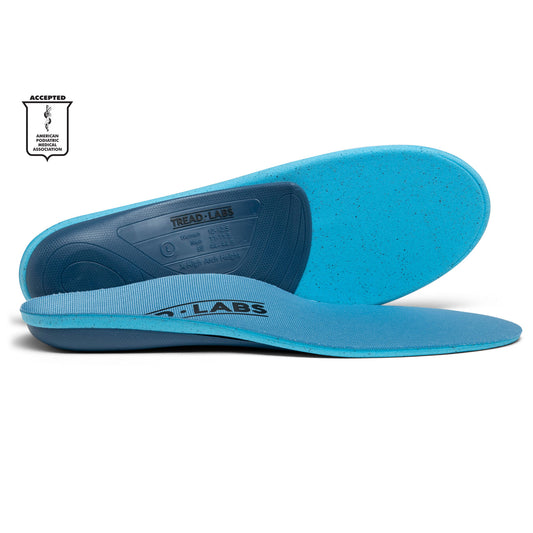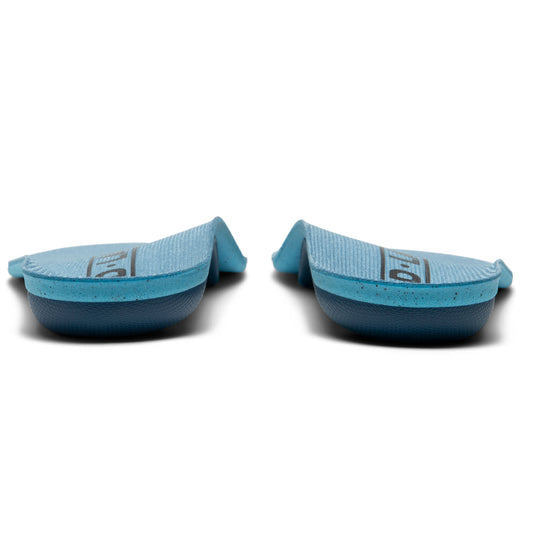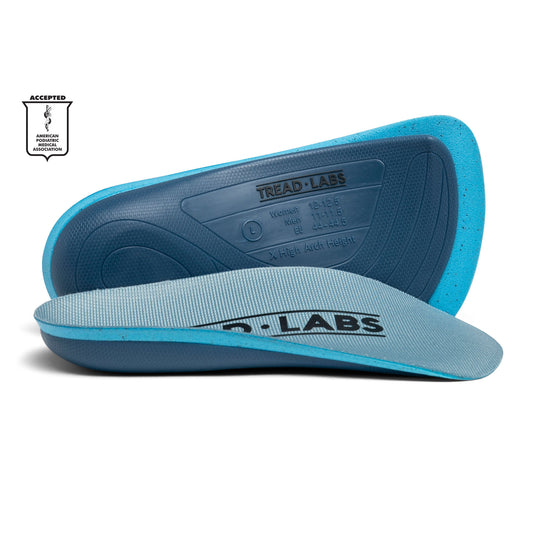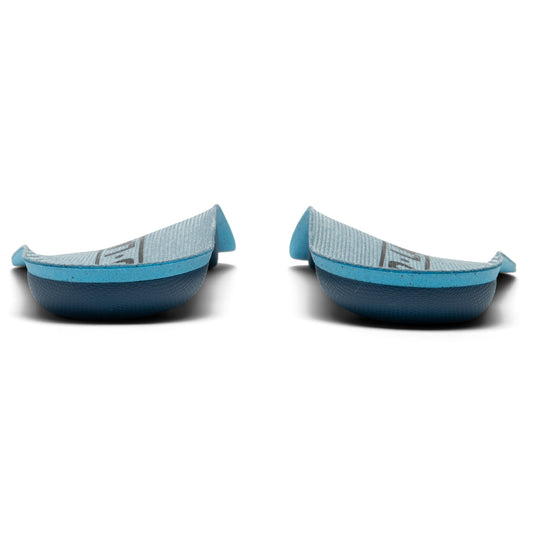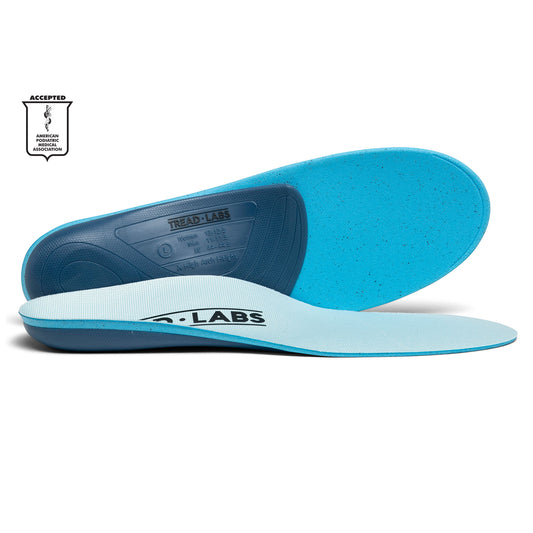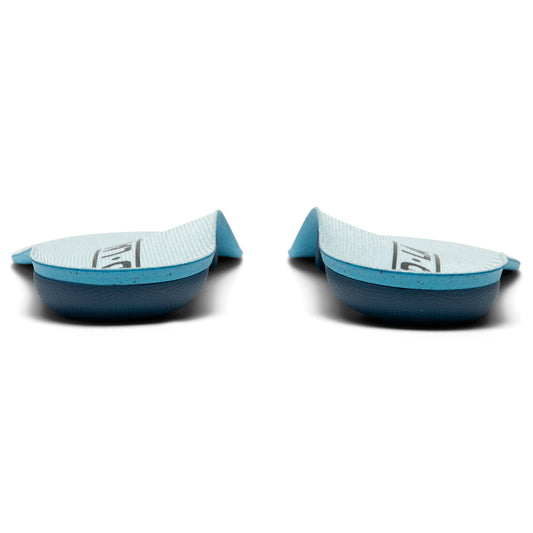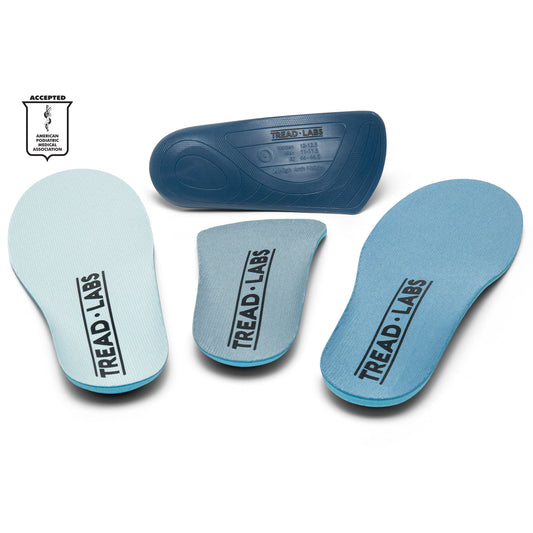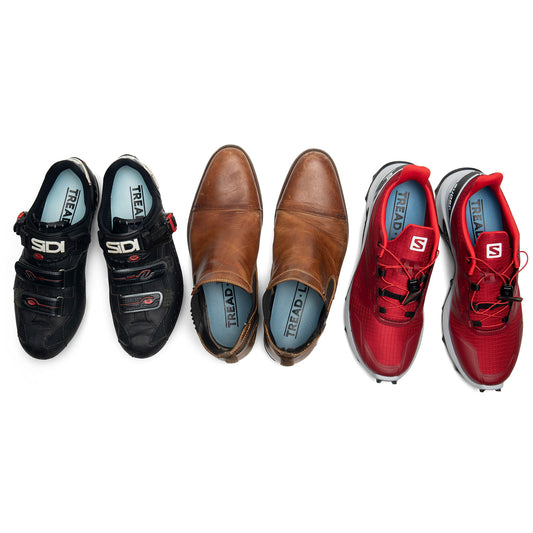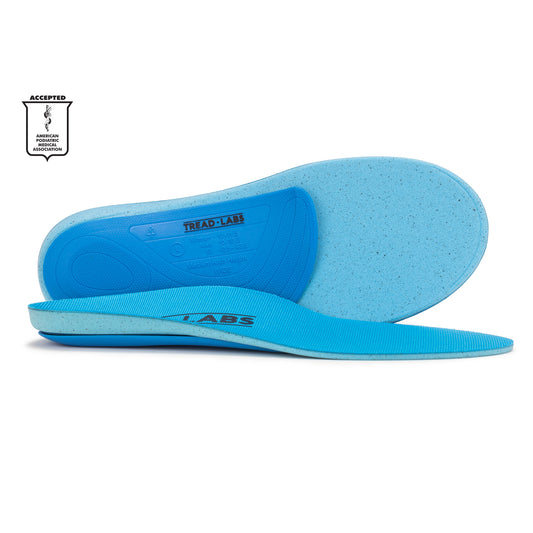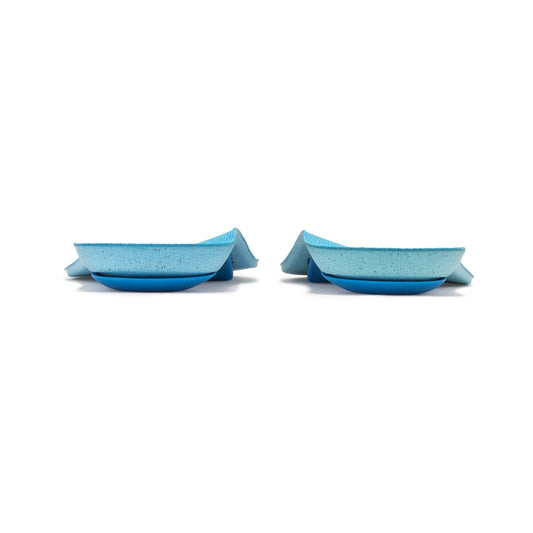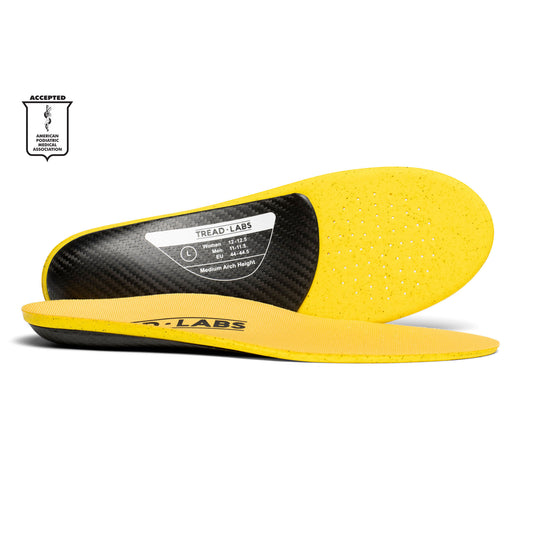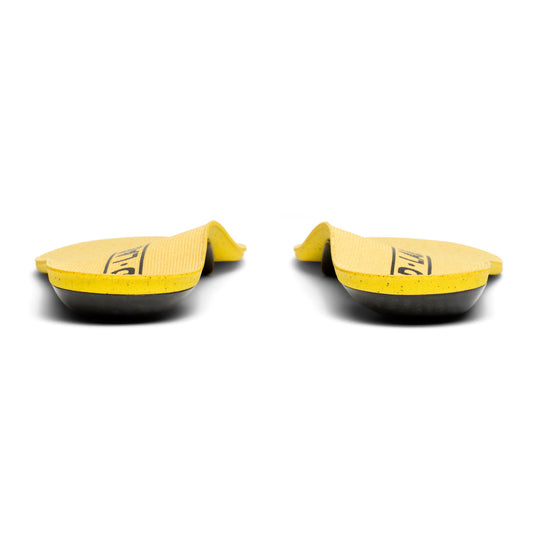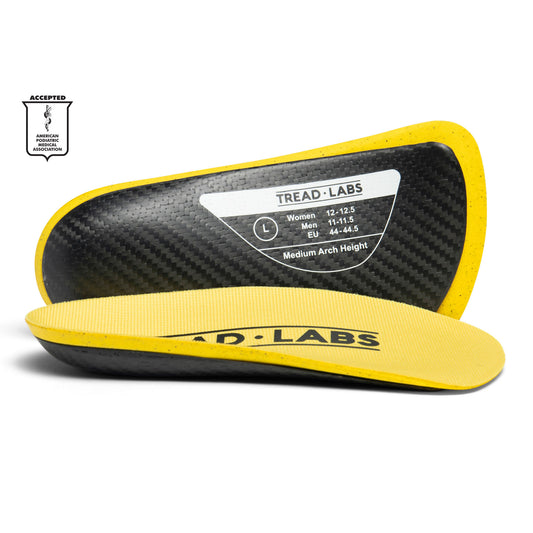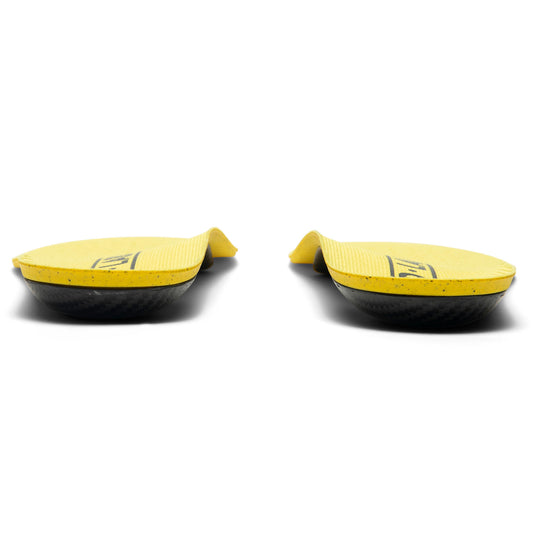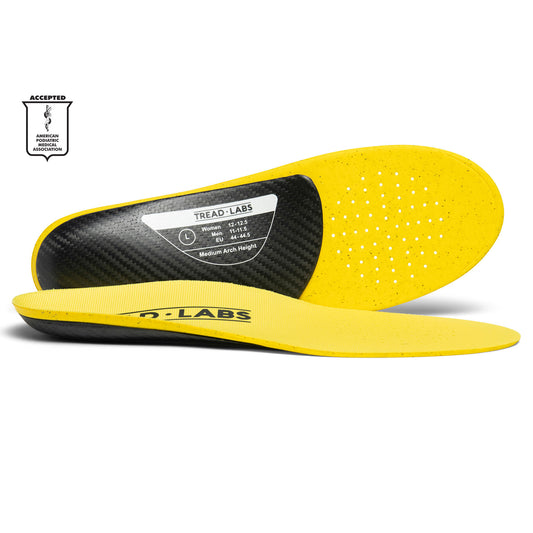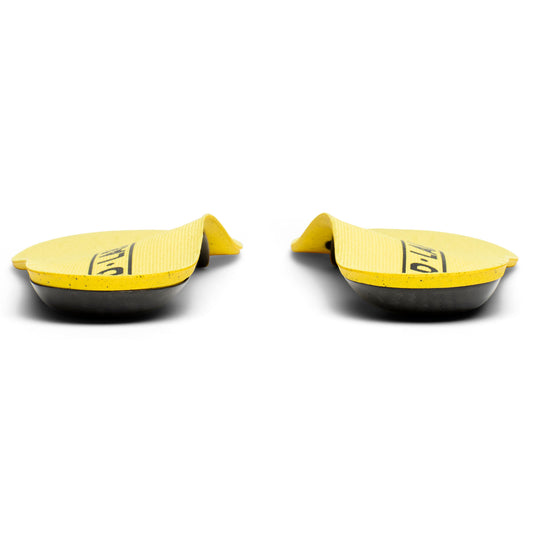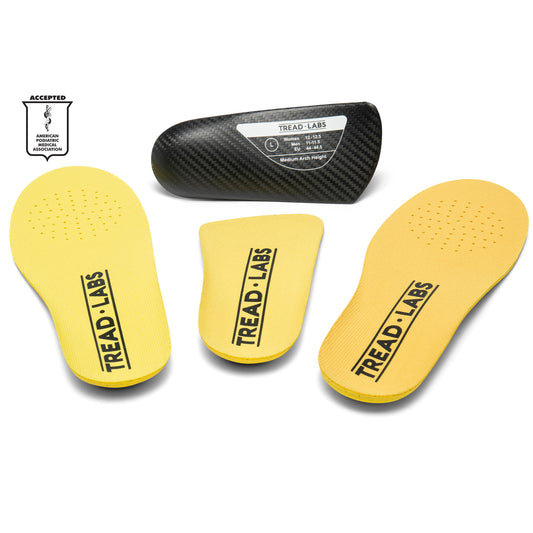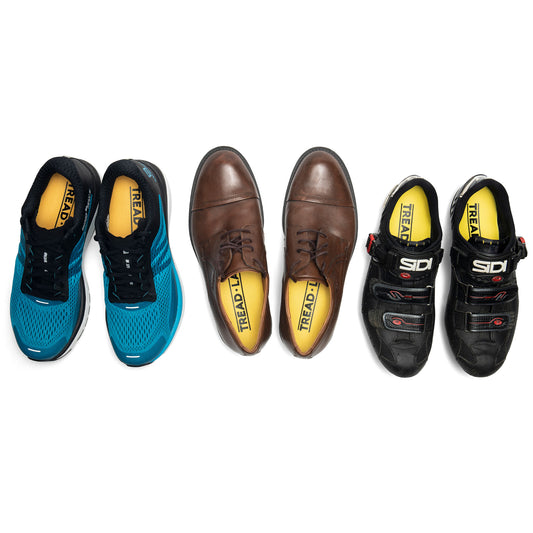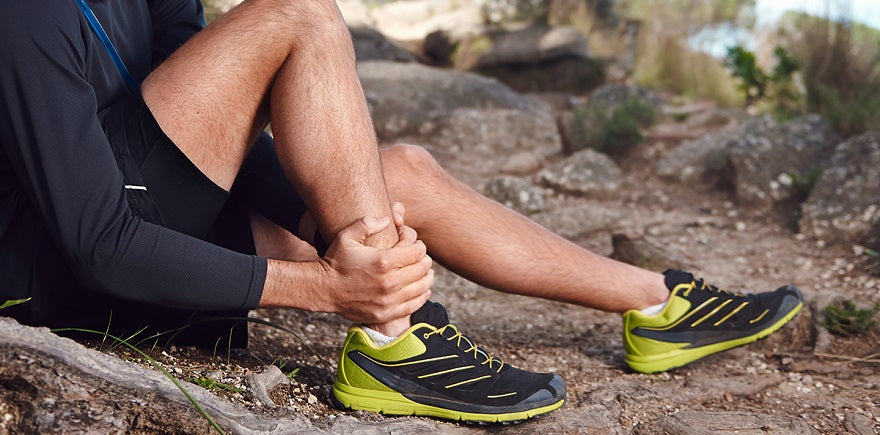
Tendinitis In The Foot Causes And Treatments
When you have foot pain, diagnosing the issue is the first step toward getting back to doing the things you love. But sometimes figuring out the root cause is complicated. For example plantar fasciitis and heel spurs are often confused for each other. Another tricky foot ailment? Tendinits.
The Basics ---
- Your feet are complex, which can make diagnosing foot conditions complicated. Tendinitis, which occurs when one of the many tendons in your foot becomes inflamed, is just one cause of foot pain.
- Because there are many different tendons in your foot, there are different types of tendinitis: Achilles tendinitis, posterior tibial tendinitis, peroneal tendinitis, extensor tendinitis, flexor tendinitis, and anterior tibial tendinitis.
- Treatment for tendinitis in the foot includes rest, icing, stretching and pain medications. Adding insoles to your footwear will also help.
- We recommended Tread Labs Pace Insoles. They offer the firm support podiatrists recommend to relieve foot pain.
What You Need To Know ---
Your feet are much more complex than you might think. In fact, nearly a quarter of all the bones in your body are in your feet. A quick anatomy lesson - Each of your feet has 26 bones, 33 joints, and more than 100 muscles, ligaments, and tendons.
Each component of your foot plays a role in your range of motion and the mobility your daily life requires. However, all the different parts in your foot mean lots of opportunity for injury.
What Is Foot Tendinitis?
Foot tendinitis - sometimes spelled tendonitis - is a common cause of foot pain that occurs when a tendon becomes irritated or inflamed. Tendinitis can affect any tendon in the foot, and since there are so many of them, it may be difficult to tell what you have if you’re in pain.
Fortunately, there are some straightforward ways to identify your foot tendinitis and determine the best treatment based on the location of your symptoms.
What Causes Foot Tendinitis?
To understand what causes tendinitis of the foot, you have to know what a tendon is. A strong, cord-like band of tissue that connects muscle to bone, tendons can withstand a great deal of force, but they have limits. When a tendon works too hard for too long, or in the wrong way, tiny tears start to develop. That's where tendinitis starts.
To cure these tears in your tendon, your body creates inflammation, which is a vital part of your immune system's response to injury and infection. It your body's way of signaling the immune system to heal and repair damaged tissue. An inflammation in a tendon is called tendonitis.
The most common cause of tendinitis in your foot is overuse, but sudden injury can also be a culprit. Athletes who push too hard or people who spend lots of time on their feet both have a higher chance of developing tendinitis. Injuring the foot or ankle, as well as having flat feet or high arches can also increase this risk. But the type of tendinitis that develops has to do with several factors.
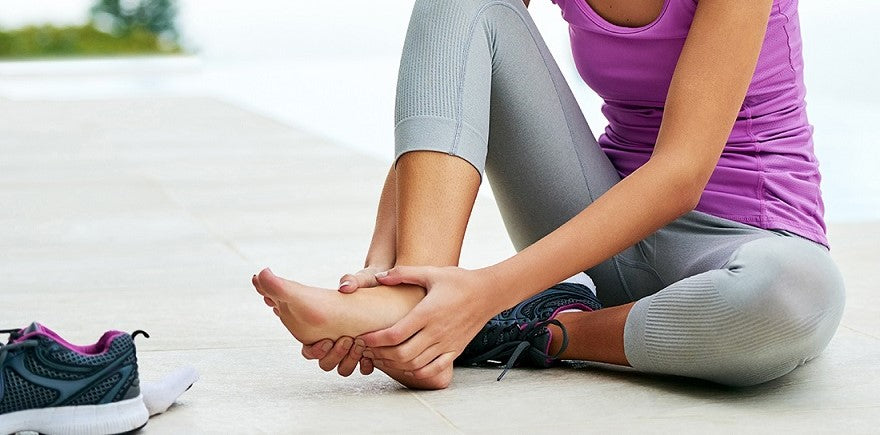
Where Does Foot Tendinitis Hurt?
Because your foot is so anatomically complex, there are a number of different types of foot tendinitis that can cause you pain - Achilles tendinitis, posterior tibial tendinitis, peroneal tendinitis, extensor tendinitis, flexor tendinitis and anterior tibial tendinitis. With so many different types, you'll want to see a medical professional for an official diagnosis and course of treatment.
Achilles Tendinitis
You've probably heard of the Achilles tendon. It's the main tendon of your foot, running from your calf muscle to your heel. It makes running, jumping, climbing stairs and standing on your toes possible.
- Symptoms – Pain, stiffness, and possibly swelling either at the bottom of the heel or slightly above the ankle, depending on which part of the tendon gets inflamed. The pain is usually worse after taking the first few steps of the day or after long periods of rest.
- Causes – A common sports injury, Achilles tendinitis tends to develop when people increase the intensity of their training too aggressively without enough time to recover. Tight calf muscles or a heel spur will add to this risk.
- Treatment – Rest, ice, pain-relieving medications, and physical therapy are the first line of treatment. Adding orthotic insoles to your shoes is a good way to address Achilles tendinitis, especially if you have flat feet. Supportive insoles will reduce strain on and damage to the Achilles tendon.
Posterior Tibial Tendinitis
The posterior tibial tendon attaches the calf muscles to the bones on the inside of the foot. It holds up the arch and supports the foot when walking.
- Symptoms – Pain and possibly swelling centered on the inner side of the foot, often arising when pushing off the foot. Pain may be on the outside of the ankle if the foot collapses.
- Causes – High-impact sports like basketball, tennis, and soccer, being overweight and old age can all lead to posterior tibial tendinitis. People with flat feet are also at a higher risk.
- Treatment – As with Achilles tendinitis, rest, ice, pain medications, physical therapy, and orthotics are most appropriate for managing posterior tibial tendinitis. Cortisone injections may be needed if other treatments fail. Insoles will give flat feet proper support.
Peroneal Tendinitis
Two peroneal tendons wrap around the outside of the ankle. One connects to the little toe and the other to the big toe.
- Symptoms – Peroneal tendinitis of the foot results in pain around the back and outer side of the ankle and foot, especially when standing or pushing off the foot. The ankle might also feel unstable during activities.
- Causes – Inflammation of the peroneal tendons usually comes from a history of ankle sprains, training too hard, wearing unsupportive footwear, or having muscle imbalances. High arches are also considered a risk factor.
- Treatment – Rest, apply ice, use pain medications, and elevate the ankle above the heart when resting to manage the pain. Stretching and strengthening exercises for all the muscles of the calf will also reduce tension and speed up the healing process. Orthotics may be helpful, but for this type of tendinitis it’s best to seek medical advice to determine if they are best for your foot type.
Extensor Tendinitis
The extensor tendons run from the front of the ankle, across the top of the foot, and attaches to the tips of the toes.
- Symptoms – Extensor tendinitis of the foot symptoms involve pain directly on the top of the foot, which gets worse with activity and better with rest. There may be some swelling, tenderness, or bruising in this area as well.
- Causes – This type of tendinitis typically occurs in people who lace their shoes too tightly, walk or run on uneven surfaces regularly or spend lots of time on their feet. Tight calf muscles can also contribute to the problem.
- Treatment – Rest, ice, pain medications, and physical therapy are typical treatments. Using a different shoe lacing system can help too. Try tying the knot on the side or skip lacing the holes over the most painful area. Orthotics may also help, but check with a doctor before adding them to your shoes.
Flexor Tendinitis
The flexor tendon runs from the lower leg, along the inside of the ankle, and connects to the big toe.
- Symptoms – Pain is in the deep back of the ankle, on the side of the big toe, or in the arch of the foot, when the big toe is being bent.
- Causes – Bending the big toe too much. Ballet dancers are most likely to develop flexor tendinitis, while athletes with flawed technique or the wrong shoes are also at risk.
- Treatment – Rest, ice, pain medications, physical therapy, stretching, and gently massaging the painful toe are all recommended. Taping the foot to protect the arch may also help.
Anterior Tibial Tendinitis
The anterior tibial tendon lies on the inner front part of the ankle and helps to lift the foot and ankle upwards and inwards.
- Symptoms – Pain and possibly swelling develops in the front of the foot when walking or running on sloped surfaces.
- Causes – This is one of the least common types of tendinitis occurring more frequently in older adults.
- Treatment – Rest, ice, pain medications, physical therapy, and calf stretching are helpful. A brace or walker boot may also be needed to stabilize the ankle or limit its movement.
How Do You Treat Foot Tendinitis?
Since tendinitis of the foot can strike many places in the foot, start by seeing a medical professional who can help you determine which tendon is inflamed. Treatment will usually involve taking a rest from your activities, icing the painful area and using pain medications. Stretching connecting muscles and making adjustments to your shoes may also help.
Pain relief insoles are ideal for addressing Achilles tendinitis and posterior tibial tendinitis, and may be appropriate for other types of tendinitis as well. A podiatrist or sports medicine professional can help you figure out whether insoles are right for you.
An inflamed tendon in the foot can impact your exercise routine and daily life, but the good news is it's usually a minor problem. Listen to your body, take time off when you need it, and make changes to your exercise habits as necessary. Your feet, and the rest of your body, will thank you.
Questions? Drop us a line at hello@treadlabs.com. We're here to help.


